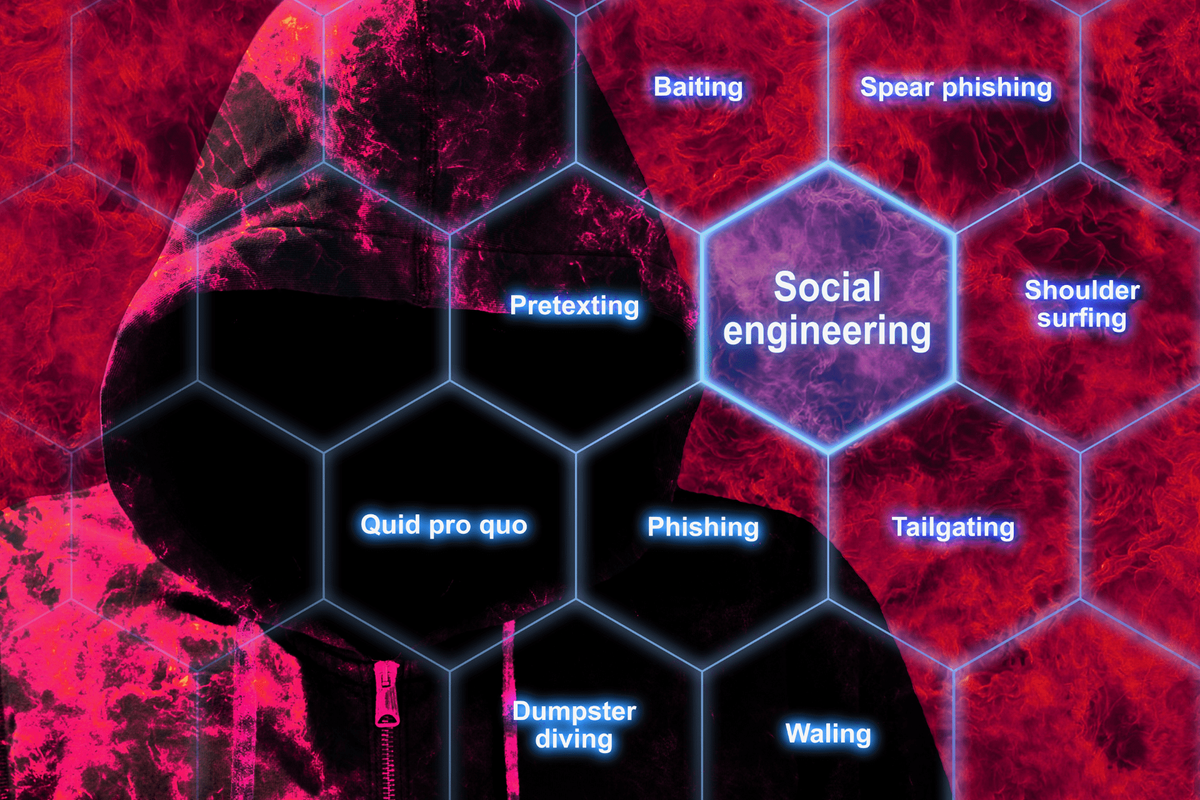Social Engineering Threat: The Art of Modern Deception
Social Engineering manipulates human behavior to exploit trust. From phishing emails to pretexting, it tricks victims into revealing sensitive data. Stay vigilant!

In the intricate web of cyberspace, where information flows freely and connections abound, there exists a potent threat lurking in the shadows – Social Engineering. Imagine this: you receive an email from a familiar company asking you to update your account information urgently. Without a second thought, you click on the link provided, only to realize later that you’ve fallen victim to a cleverly crafted scam. This is just one scenario in the realm of social engineering attacks, where human psychology is exploited to manipulate individuals into divulging sensitive information or performing actions that compromise their security.
Social engineering is not merely a technical exploit; it’s an art form, a manipulation of human behavior designed to bypass traditional security measures. From phishing emails and phone scams to pretexting and baiting, social engineers employ a variety of tactics to deceive their targets. But how exactly do these attacks work, and more importantly, how can you protect yourself against them?
Understanding the Anatomy of Social Engineering Attacks
At its core, social engineering relies on psychological manipulation to exploit human trust and curiosity. One of the most common forms of social engineering is phishing, where attackers masquerade as legitimate entities to trick individuals into revealing confidential information such as passwords or financial details. Phishing emails often contain urgent appeals or enticing offers, compelling recipients to act impulsively without scrutinizing the authenticity of the message.
Another tactic used in social engineering attacks is pretexting, where attackers fabricate a scenario to gain the trust of their targets. For example, a scammer might pose as a tech support agent and convince a victim to provide remote access to their computer under the guise of troubleshooting a non-existent issue. By preying on the victim’s desire for assistance, the attacker gains access to sensitive data or installs malware without raising suspicion.
Types of Social Engineering Attacks
Social engineering attacks come in various forms, each targeting different aspects of human behavior and cognition. Here are some of the most prevalent types:
- Phishing: As mentioned earlier, phishing is a widespread form of social engineering that involves sending fraudulent emails or messages to trick recipients into divulging sensitive information or clicking on malicious links.
- Pretexting: In pretexting attacks, the attacker creates a false pretext or scenario to manipulate the victim into disclosing information or performing certain actions. This could involve posing as a trusted authority figure or using social engineering techniques to establish rapport with the victim.
- Baiting: Baiting attacks lure victims into a trap by offering something enticing, such as a free download or a promising investment opportunity. Once the victim takes the bait, they inadvertently compromise their security by downloading malware or disclosing sensitive information.
- Tailgating: Also known as piggybacking, tailgating involves gaining unauthorized access to a restricted area by following closely behind an authorized individual. This physical form of social engineering exploits the natural tendency to hold doors open for others or avoid confrontation.
- Quid Pro Quo: In quid pro quo attacks, the attacker offers a benefit or service in exchange for information or access. For example, a scammer might pose as an IT technician offering free software upgrades in exchange for login credentials.
- Impersonation: Impersonation attacks involve assuming the identity of someone else, such as a trusted colleague or authority figure, to gain access to sensitive information or resources.
- Pharming: Pharming attacks redirect victims to fraudulent websites or DNS servers without their knowledge, typically through the manipulation of DNS settings or the use of malicious software.
- Watering Hole Attacks: Watering hole attacks compromise websites frequented by specific groups or communities, infecting visitors’ devices with malware and compromising their security.
Protecting Yourself Against Social Engineering Attacks
Now that we’ve shed light on the modus operandi of social engineering attacks, it’s crucial to arm ourselves with the knowledge and tools to defend against them. Here are some practical steps you can take to safeguard your digital identity:
- Educate Yourself: Knowledge is your first line of defense against social engineering attacks. Familiarize yourself with common tactics used by scammers, such as phishing emails, pretexting, and baiting. Stay informed about the latest cybersecurity threats and cultivate a healthy skepticism towards unsolicited requests for information or assistance.
- Verify Requests: Before disclosing sensitive information or taking action based on a request, always verify the authenticity of the communication. Contact the supposed sender through official channels, such as their website or customer service hotline, to confirm the legitimacy of the request. Remember, legitimate organizations will never ask for sensitive information via email or phone without prior authentication.
- Exercise Caution Online: Be mindful of the information you share on social media and other online platforms. Avoid oversharing personal details that could be used by scammers to craft targeted attacks. Additionally, practice good password hygiene by using strong, unique passwords for each online account and enabling multi-factor authentication whenever possible.
- Stay Vigilant: Trust your instincts and remain vigilant against suspicious behavior or requests. If something seems too good to be true or raises red flags, take a step back and investigate further before proceeding. Remember, it’s better to err on the side of caution than to fall prey to a social engineering scam.
- Security Awareness Training: Organizations can further mitigate the risk of social engineering attacks by implementing comprehensive security awareness training programs for employees. These programs should cover a range of topics, including recognizing common social engineering tactics, handling suspicious communications, and reporting security incidents. By arming employees with the knowledge and skills to identify and respond to potential threats, organizations can create a culture of security awareness that strengthens their overall cybersecurity posture.
- Implement Security Controls: In addition to user education and awareness, organizations should implement technical controls to mitigate the risk of social engineering attacks. This includes deploying advanced email filtering solutions to detect and block phishing emails, implementing web filtering tools to prevent access to malicious websites, and deploying endpoint protection software to detect and block malware infections. By combining user education with robust technical controls, organizations can create multiple layers of defense against social engineering attacks.
- Regular Security Audits: Regular security audits and assessments are essential for identifying vulnerabilities and weaknesses in an organization’s security posture. By conducting regular audits of systems, processes, and procedures, organizations can identify and remediate potential security gaps before they can be exploited by attackers. This proactive approach to security management helps organizations stay one step ahead of cyber threats and minimizes the risk of successful social engineering attacks.
Conclusion
In an increasingly interconnected world, where digital interactions are the norm, the threat of social engineering attacks continues to evolve and adapt. By understanding the various types of social engineering tactics employed by attackers and implementing proactive security measures, individuals and organizations can minimize the risk of falling victim to these deceptive schemes. Whether it’s phishing emails, pretexting calls, or impersonation scams, the key to thwarting social engineering attacks lies in education, awareness, and vigilance. By staying informed, staying vigilant, and staying one step ahead of the social engineers, you can protect yourself and your organization from the devastating consequences of social engineering attacks.
As you navigate the digital landscape, remember that cybersecurity is a shared responsibility. By working together to identify and mitigate potential threats, we can create a safer and more secure online environment for everyone.





